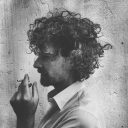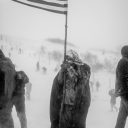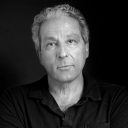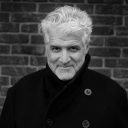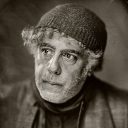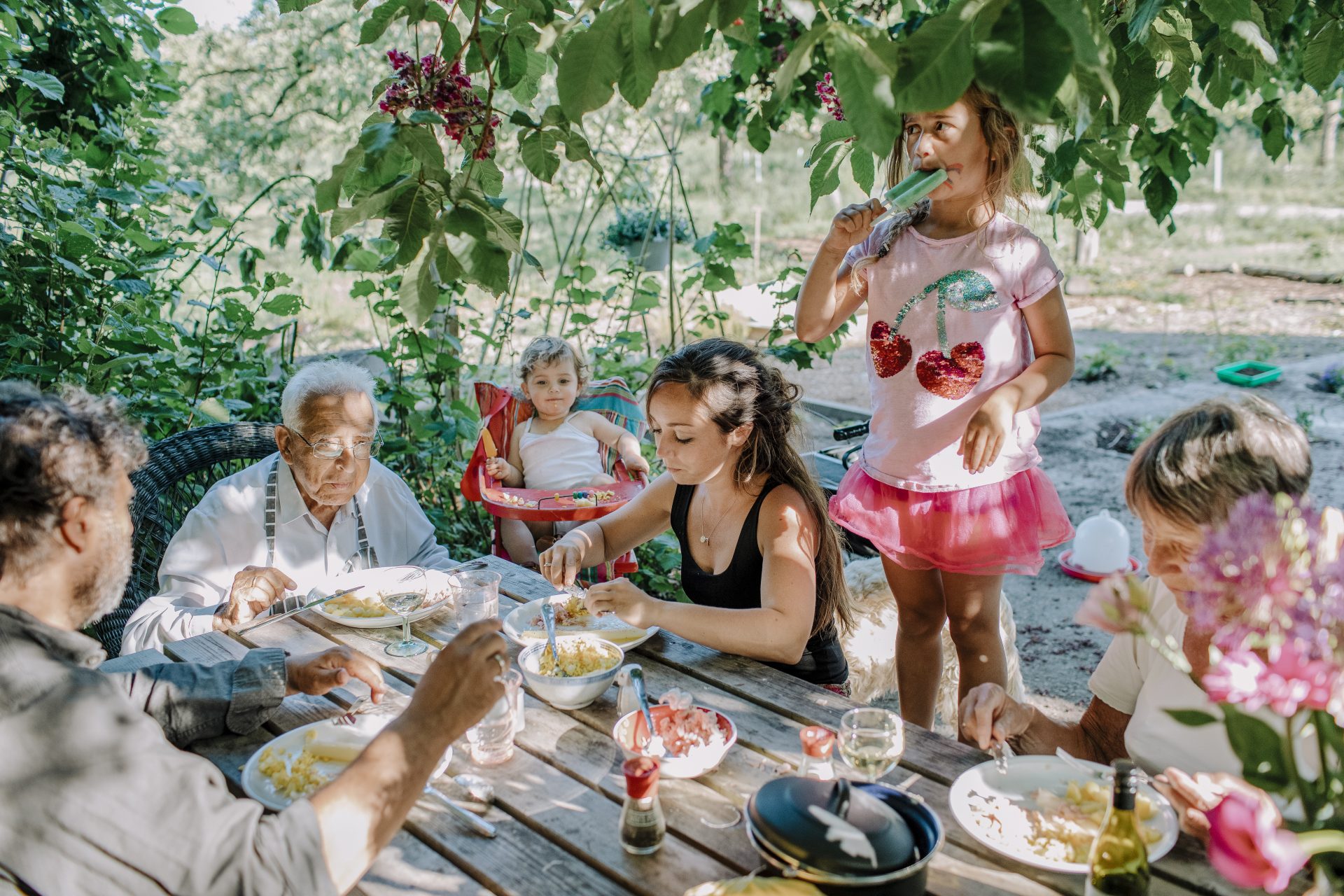On assignment for publications including TIME, The New York Times Magazine, and The New Republic, four members of VII photographed the Trump rally and the violence that it unleashed at the Capitol in Washington, D.C., on January 6, 2021.
On January 18, 2021, Gary Knight spoke with Ashley Gilbertson, Ron Haviv, Christopher Morris, and Christopher Lee, seasoned veterans of conflict, about their experiences that day. They discussed what they saw, how they made decisions, processed information and made choices during the fast-moving, unpredictable and violent events in their own country.
Below is some of the Q&A that followed the conversation.
Q&A
We try to answer as many questions as we can in the live event. Below is a selection of those we didn’t get to.
Do Trump groups have their own professional photographers? Is there interaction with right-wing media photographers?
We are not sure
Thanks for improving the quality of the images! Will Chris or any of the others talk about the decision when to take video or take stills? How do they handle the obvious conflict when they have to do both?
Difficult decision when to record and when to take pix.
I love that Gary looks like an Avedon portrait
Very flattering – maybe the background needs to be more white for that?
Gary’s comment, ”a member of fake news” is interesting – now photojournalists / photographers been politicised – and targeted – how do you deal with the effect of this perceived loss of neutrality?
Sometimes you can’t do anything about it. Some people are convinced no matter what you say is a lie. For the rest, it helps, if possible, to have a conversation with people accusing you of being “fake news”. Chances are, they will change their mind, at least about you. – Chris Lee
Hope speakers will address the decision to use b/w vs. color, assuming their digital capture gives them the option to decide later?
I chose B&W for a couple of different reasons: it’s such a kinetic event and being able to read how people were interacting with their environments was important to me in telling this story. Another reason, selfishly, is that it’s easier for me to compose on the go with B&W. I rarely convert to B&W or color after the fact. If I choose B&W then I’m shooting that in camera. – Chris Lee
Question for when the moment comes…THE FBI and DOJ in their press conference last week said they formulated a specific strike force or task force to investigate attacks on journalists from that day. Were any of you attacked and then contacted or working with them on those assaults? And I assume no journalists will be charged with actually being in the building on that day?
I’m not well versed enough in the legal bits to answer this. – Chris Lee
I wonder if anyone is comfortable commenting on this: In Ash’s photo of Eugene Goodman so amazing–a Black police officer showing restraint in holding back a white mob. Ash quite rightly speaks of his heroism in showing restraint. What would this situation have been if it was a white officer confronting a Black crowd?
We can’t really speculate on hypotheticals but Officer Goodman was incredibly courageous.
Mr Haviv, what is the creative decision behind shooting black and white in such situation?
Another fascinating element of this day is the sheer number of videos and stills being made by rioters. They seemed to be very proud – making it known they were there, many of them uploading images to Parler and other social media platforms – without fear of being found out AS it unfolded.
Could you speak to this experience of so many with phones out – have you seen this in these numbers elsewhere during unrest? Seems as if it kept many of the distracted on phones while tactical types moved forward.
Not sure about what advantages or disadvantages the phones served but with more and more people using social media, even the older generation, as their political soapbox I’ve seen an increase in phone usage while people participated in things similar to this. – Chris Lee
What are your thoughts if Chris Lee were African American? Could a Black photographer have covered this event without getting hurt?
I know for a fact that there were black photographers there. But I was also told by other black photographers that they steer clear of events like that because they think it’s more dangerous for them. – Chris Lee
Did all of you wear press IDs? How did you decide whether to wear one and when?
I think we all had some kind of press credential on us. You have to read the room for situations like that. As we saw with Erin Schaff, the NYT staffer who was attacked inside the Capitol, having a press credential visible could be dangerous. – Chris Lee
When law enforcement finally regained control of the Capitol, there have been some reports of journalists being detained or questioned … did any of you run into any issues with police or National Guard during the day? Anything different than you might face from authorities in covering other conflicts?
There will always be issues with the press and law enforcement. None of us at VII were detained and I personally was never threatened with detention. – Chris Lee
A question for everyone: were you frightened by the weapons that the rioters were carrying? Did you see a lot of guns on them?
I saw some firearms but not many. Mostly bats, pitchforks, batons, staffs, and mace/pepper spray. I think regardless of how we felt during the time we were working, the risk was high considering several people died, including an officer being beaten to death with a fire extinguisher. – Chris Lee
For Ashley’s image (28) but all the others as well: how long do the photographers decide to stick around and wait for a moment within a specific composition that they find?
We stick around for as long as we need to or are able to in order to get the picture. The challenge comes down to whether you trust your gut enough to know that’s the picture and not something else. – Chris Lee
How would you as a photographer maintain composure and not get involved in preventing the destruction happening?
Our job isn’t to protect the building – it’s to document what’s happening. Other people are better placed to stop the damage, and if the DC and Capitol Police couldn’t stop it, we would not have much chance.
Given that Trump supporters aren’t massive fans of the media and photojournalists, did any of you feel you were making this work from a feeling of anger and knowing that people you documented could be incriminated?
I try my best to make work that accurately reflects what was going on in front of me or what happened to me. I think to expect complete objectivity from humans is incorrect as we are not objective creatures. But we, as an agency and as individuals, work with integrity being paramount. – Chris Lee
Really great conversation so far. Can anyone talk about your own choices in the moment of using color vs B&W, taking stills vs video, etc? Is Ron shooting color and then stripping it off (making B&W) during editing?
I chose B&W for a couple of different reasons: it’s such a kinetic event and being able to read how people were interacting with their environments was important to me in telling this story. Another reason, selfishly, is that it’s easier for me to compose on the go with B&W. I rarely convert to B&W or color after the fact. If I choose B&W then I’m shooting that in camera. – Chris Lee
Fascinating stories, thank you. Can we talk about everyone’s chosen camera/lens for this?
I was using a Fuji X-Pro 3 body with a 23mm and 35mm (effective 35mm and 50mm on full-frame). I like using one body and changing lenses as the situation changes. – Chris Lee
Do you have a “ready to use” talking strategy to try to dissipate anger or violence towards you in situations like that?
Not for me. You just have to have a heightened sense of awareness of what’s going on, read the room, and then move forward from there. Our jobs are just as much about interacting with other people as it is about making pictures. – Chris Lee
How can I purchase a copy of the Eugene Goodman photo for personal use?
Please write to us at [email protected] regarding print sales. We love selling prints!!!
Will you all go back for the inauguration?
3 of us are here.
Will the image of Eugene Goodman be for sale? Will these be a book? Will prints be available?
We’ve answered the question about the print sales. Not sure what each photographer will do with their own work. Others will be able to purchase from the VII store.
Any chance you can share what gear you bring when immersing into these crowds?
Nothing specific for me. I think there is always a trade-off and mitigation of risk/safety you have to consider with every piece of gear you bring. At the end of the day, your gut instincts and your ability to be aware of your surroundings and act upon them will be the thing that saves your life. – Chris Lee
Thank you for all of your work. The pictures are astonishing. Do you pack special gear to protect you from tear-gassed and how does that impact the camera?
Nothing specific for me. I use pretty inexpensive cameras because they are easy on my wallet to replace if they do become damaged. – Chris Lee
How do you spell “lie-dor/Lightor”??
LIDAR
“Fascinating talk all, thank you. I run a Photojournalism course in the UK. We are seeing a real passion in young people now about photojournalism. What advice would you give someone coming into the industry facing the events of the 6th or similar?”
That’s too big a question to answer here but your students are welcome to take advantage of all our resources here and at the VII Academy to help them make good decisions.
This may have been mentioned but it was quiet on Sunday, and clearly, we were all surprised by last Wednesday. Are you fearful of what may happen two days from now?
Time will tell! – Chris Lee
Thank you all for sharing your experiences! Can I ask what advice do you have for aspiring photojournalists/journalists? How should we go about finding stories in our everyday life?
Outside lies magic. You don’t need the spectacular events to tell stories.
In response to the title of this webinar “Anarchy in the US”, do you think this title is accurate to what occurred at the Capitol or are these events more aligned with fascism (as opposed to anarchy)?
Anarchy is a non-recognition of authority, so we think it fits.
How do you decide when you opt to shoot video or moving image? Do you ever pull frames from video?
I always put still photographs first above all mediums. If a client or editor asks me for both, I make sure they know that if something crazy happens it’ll be recorded as a photograph, not a video. – Chris Lee
How do you deal with conversation in such a hostile environment? You don’t want to talk to these people, but if they approach you, how do you react? try to be friendly, be a bit hypocritical?
Our job is to document what we see, interpret it for a wider public. Conversation is useful to get information and understand what is happening but in a kinetic environment like this it can become a distraction. Be polite, move on.
When the protesters start attacking photojournalists in such chaotic situations, do you keep an eye on each other? For example, work in pairs or close to each other so you can warn each other or protect one another?
Yes, we often try to! Sometimes it’s not always possible but that’s where knowing your surroundings and your risks and making judgments based off that is so important. There is no one that’s going to look out for you the most other than you. – Chris Lee
Hi y’all…I’m ex-BBC journo (of 30yrs+) giving pro-bono non-profit online webinar early Feb trying to help UK (& maybe wider) citizens understand what’s happening re global news media. (Jon Sopel/Katty Kay/Ros Tamblyn in BBC DC Bureau can vouch for me). Would you all be ok if I show some of these shots with your credit on them?…SO appreciate hearing from you all, def. not ‘enemy of the people’ at all!
Yes. Contact [email protected] for permission.
A question relating to the topic just spoken about. Obviously, you have all risked your lives documenting the events unfolding at the Capitol. But what’s the balance between risking your life to get good imagery and backing off because you fear for your life?
I think there are very few pictures worth your life. – Chris Lee
“Hi, I was looking at some of the images earlier and some of the black and white images look like they were shot on film. Were any of you using film on that day? Thank you for taking your time to share this with us, I’ve just finished my BA in Journalism and I’m trying to get learn more of the photojournalism industry. I was covering the BREXIT stuff in the UK while at Uni.”
Everyone was using digital cameras on this story. Good luck with your career!
Gary, how would you suggest going about finding a mentorship like you mentioned?
We have an application process for mentorship at VII that appears on our website from time to time. Apart from that, identify the photographers who resonate with you and reach out to them. Try to build a relationship with them. Mentoring isn’t all one way – more established photographers enjoy the process of being challenged and can learn a lot from younger photographers. Transferring knowledge to ensure the future of our craft is a really rewarding thing to do, few things are as rewarding than seeing young people you mentor go on and succeed. We take new people in from time to time…please apply.
What would you say if photographers from local state and city newsrooms start to experience more urban conflict in the US as a matter of course? This excludes choosing to be a “conflict photographer” if it is part of a staff photographer’s job responsibility. They don’t get to choose to “get the hell out.”
I am personally worried that this type of violence will become more of a common occurrence. I don’t think photographers should be made to put themselves at risk. This job is a choice at the end of the day, no matter how much of a service you provide. – Chris Lee
Thanks a million to all of you for sharing these experiences with us. I have so much respect for the work you do – and the work that is be done behind the scenes. The truth is, that your status as journalists is not protected nor renumerated enough.
Two questions:
1. I am currently building a community for young (up until 30 years of age) people interested in documentary photography / journalism. Photography and writing should join forces here. How do you keep track of your feelings, phrases and expressions thrown at you, details people might tell you on assignments? You can’t simply stop taking pictures and writing stuff down? Or do you? Do you take audio memos on your assignments?
2. Do you have a plan B for saving your shots in an incident where, for instance, your camera would be taken away? Regularly switching SD cards or backing up to the iPhone?
3. Can you recommend any courses based in the EU for ongoing documentary photographers?
I am very grateful for your protective work of democracy!”
1. Utterly agree with that sentiment about writing. Writing is fundamental. Some of us make notes on paper, some on phones, some of us still have good memories – especially anyone as young as Chris Lee. In any event, observe – make notes. Keep records.
2. Sometimes you have to take the card or film out of the camera and hide it somewhere safe. On a phone back it up in the cloud.
3. Look up the VII Academy. -Gary Knight.
I always put photographing first when it comes to how I want to record this moment. Having said that, it’s often helpful to sit down and write out or record yourself speaking after everything is said and done, when things are still fresh in your mind. It’s not only a good way to take notes but also a good way to process what you just witnessed or participated in.
Always, always have multiple memory cards on you! swap them out throughout the day even if they’re not full. If you feel like you have some really successful pictures, take the card out and put it somewhere safe. It’s better to lose a part of the day’s shoot than it is to lose the entire day.
Not sure about the EU but the VII Academy has wonderful resources for education! – Chris Lee”
The mentoring piece is really important – but that raises the question about diversity of the viewer/photographer. How much effort is there, if any, to mentor women, POC in an industry that has been largely male and white?
Great question. At VII we set up our Mentor Program to increase diversity in the industry. We are not perfect, our agency is monocultural, but through our mentor program and through the VII Academy, which offers free education to men and women from non-G20 countries and people from underrepresented communities in G20 countries, we are trying to diversify the medium and make a difference. Never hesitate to be in contact.
Would any of you guys consider wearing a little red white and blue “America” style clothing (not overtly Trump/MAGA) to try to blend in and avoid conflict?
I would not. I don’t wear that kind of stuff in my personal or professional life so why change that? I’m not trying to deceive people. If they don’t want me there then it’s my job to convince them otherwise or I find a different way. – Chris Lee ”
There was talk about lost sleep due to what-ifs. How do you reckon with pictures missed? I.e. missing the chamber moments, having to accept the moments you found, moments that happened too fast for a camera to be raised?
I personally talk to people about my experiences. The regrets will always be there, no matter what kind of assignment or shoot it is. Use that energy to do better on the next one or build on what you have made already. – Chris Lee
Thank you all for sharing your insights and for your collective coverage of this story. To VII, please continue with this type of outreach/educational programming. The context it provides lifts us all in our understanding of the story and of journalism itself.
We plan on it if we can get enough support.
Thank you so much for organizing this talk, your images and insights. Could you speak to this experience of so many with phones out recording with pride – have you seen this in these numbers elsewhere during unrest? There was a ferver to record, upload, transmit to Parler or other as they were so proud of being there as “patriots.” Now these images are being collected by FBI. Could you speak to this? It feels an important moment here in photo history. Looks like out of time here today, but love to see another conversation on this. Thank you again, incredible gathering here.
I can’t know what goes on in people’s heads at any given time but it seems as though there are two things at play here: 1. the Trump base feels emboldened by the president. If the most powerful person in the world repeatedly reminds you that he has your back no matter what you do, you’d feel comfortable doing messed-up stuff too. 2. I think people are using social media as their soapbox now more than ever, even the older generation of people. It’s not just a young person thing anymore. And I think there is this feeling of hiding behind an avatar on the web that makes it feel less dangerous or self-incriminating. – Chris Lee
What are your thoughts on Twitter / FB closing/block accounts? Will it make the upcoming events safer?
We photograph what’s there, safe or not.
Just as an add-on to John’s question about wearing MAGA regalia, are there any questions about journalistic ethics in dressing up like one of the Trump supporters? Is there a line?
I would not. I don’t wear that kind of stuff in my personal or professional life so why change that? I’m not trying to deceive people. If they don’t want me there then it’s my job to convince them otherwise or I find a different way. I also think the trade-off is more dangerous. What happens when people find out that you were trying to deceive them? They didn’t like you before, they for sure will like you even less after that. – Chris Lee
Thank you all I look forward to sharing this with my doc class at Emerson College.
Thank you!
